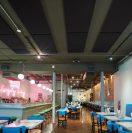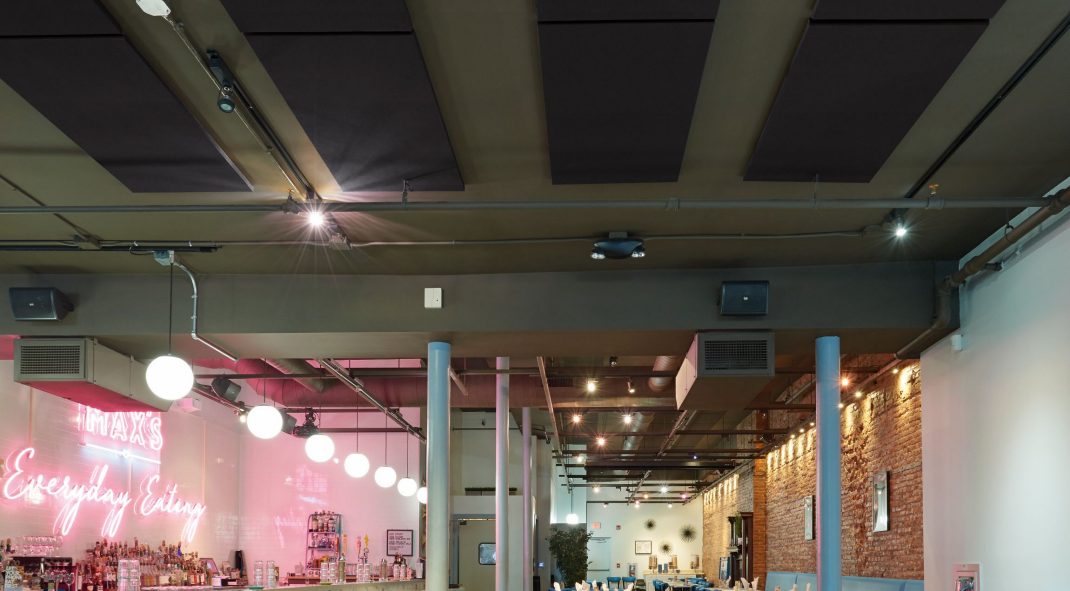The Challenge:
Max’s Eatery is a 2,800-square-foot restaurant with a seating capacity of 128. It is located in a space previously occupied by another restaurant. Soon after owner, Matt Titter, renovated the space and opened, he realized there was a noise problem. “The space is full of hard surfaces, which made it really difficult to have a conversation at a table. Plus, we became known for our milk shakes, and the constant whirr of the milk shake mixers created another layer of noise that added to the problem. We had some real sound struggles.”
The Solution:
Titter explains he wanted to retain the exposed structure look of the space, which eliminated use of a traditional wall-to-wall acoustical ceiling to solve the noise problem. In addition, obstructions in the ceiling negated the possible use of any acoustical clouds.
Instead, 1,200 square feet of LYRA PB Direct-Apply ceiling panels from Armstrong Ceiling Solutions were installed. When applied directly to a deck, the panels have a Noise Reduction Coefficient (NRC) of 0.80, meaning they absorb 80% of the sound that strikes them.
Environmentally, the fiberglass panels are manufactured using a plant-based binder and are part of the Armstrong SUSTAIN portfolio that meets the most stringent industry sustainability standards. The panels can also be recycled at the end of their useful life through the Armstrong Ceilings Recycling Program.
Ninety panels, each measuring 2' x 4' x 1", were installed. Black in color, the panels were applied directly to the drywall deck using a ceiling adhesive. Installation took place in less than a day and the restaurant never had to close. Following installation, Titter notes the change in the acoustical environment was immediately noticed by staff and clientele alike. As he describes it, “There was a whole new ‘feel’ to the space.”
On-site acoustical testing confirmed the improvement. Prior to the panels, reverberation time in the space was 1.3 seconds. Following installation of the panels, it decreased to 0.8 seconds – a significant acoustical reduction of nearly 40%. This reduction in reverberation time resulted in a reduction of overall noise levels.
“The whole dining experience changed,” Titter states. “No longer are the servers or diners overwhelmed by noise. The panels turned out to be a quick, easy, and efficient way to absorb sound without having to make any major changes. And, the fact that they could be installed without having to close the restaurant was a bonus.”


